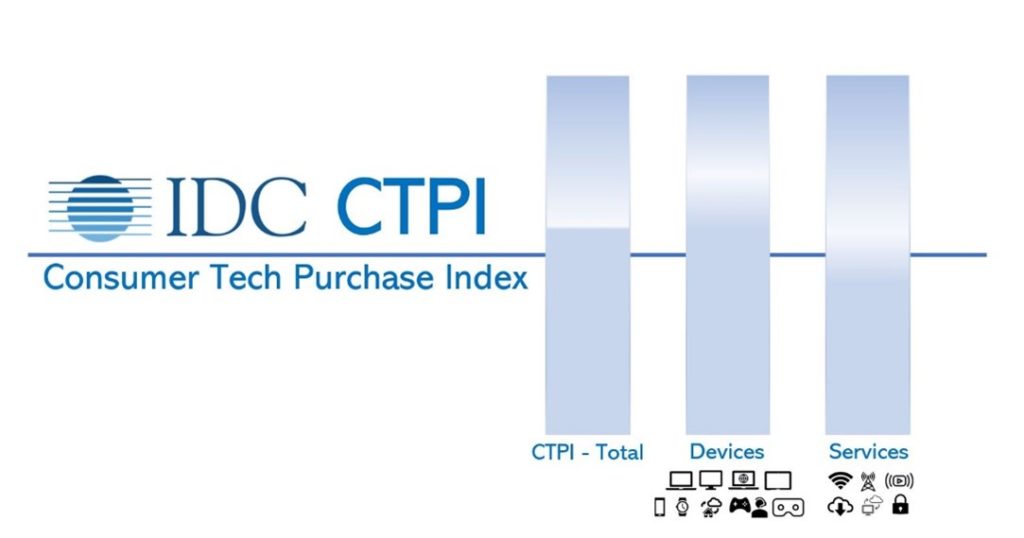In 2020, COVID-19 catalyzed a perfect storm of events that drove significant increases in consumer tech spend and accelerated digital transformation.
Stay-at-home orders made the home the center of everything and forced everything to be done digitally.
Consumers had both time and money on their hands and could not spend on many normal expenditures (ex. travel, restaurants, etc.). Consequently, they spent on consumer tech – and oh, did they spend!
We are now a full year into the pandemic and according to a recent IDC survey, consumer spending in the first quarter of 2021 grew 6.3% quarter-over-quarter. Typically, spend drops in the first quarter, but this year it went up! Strong consumer interest and a third round of government stimulus working hand-in-hand!
Everyone is asking themselves the same questions. How long can this last?
What are consumers going to do? How bullish should we be? Ironically, increased consumer confidence and the prospects of burgeoning economic growth could threaten to derail consumer tech spend in a way the pandemic itself never could. For now, that is not the case according to IDC’s just released Consumer Tech Purchase Index (CTPI). But over the next 6-9 months, it is a real possibility.

In the Short-term, Tech Spend Will Stabilize at a High Level, Even Edge Higher
Over the next two months, device spend will begin to rebound after slowing over recent weeks, and service spend will sustain at the new high level achieved since January as consumers increased their monthly outlays on tech-enabled subscription services.
The CTPI, which measures consumer attitudes, behavior, and intentions, is a leading indicator of consumer spend. Ultimately, consumer spend is the byproduct of the tug-of-war between competing forces which impact spend positively and negatively.
Currently the positive outweighs the negative. The high current level of spend provides the impetus for further spend and consumers continue to believe that “it’s a good time to buy.” What’s more, consumers continue to feel the need for more.
Throughout the pandemic, consumers have indicated that they are uncomfortable with the level of their tech spend, reporting they are spending an increasing share of their budget on tech. Yet all the while continuing to spend more and more on tech.
In many ways that may reflect the fact that they feel they have had no choice but to spend on tech. What happens when they do?
Middle- and High-income Buyers are Driving Increased Current Tech Spend
Consumers with incomes of $50K to $100K and $100K+ are fueling the current increases in spend that will carry forward for the next two months. Their disposable income makes this possible. Yet these same consumers long for a return to normalcy.
Consumer Confidence is Up; Pent-up Demand Outside of Tech is Real
In March, in that same IDC survey, consumer concern with COVID-19 hit its lowest monthly level since the study began in April 2020, falling from 56% to 49%. In the same month, consumer confidence surged reaching its highest level in a year.
Vaccine rollouts, softening of restrictions, and positive economic news, job prospects are boosting consumer confidence and leading consumers to venture out – tired of being trapped at home. As they do, they are spending again – on the normal things of life (restaurants, clothes, gas for their cars, travel, etc.).
Economic forecasts are bullish, forecasting growth of 5.5% to 7.0%. Ironically, the question this raises is whether economic growth and a return to “normal” will help or hurt consumer tech spend.
In the medium and long-term, will the new level of consumer tech spend be permanent, locking in its place along other “must spend” expenses? Or will it fade, like water returning to its level?
Key Takeaways & Actionability for Product Developers, Marketers & Strategists
- Much opportunity remains in the short-term.
- Consumers’ propensity to spend on devices and services remains high.
- PCs and tablets continue to be in demand.
- Refresh rates had gotten long so many consumers are ready to buy.
- Personal use is still relevant; while work-from-home use cases drove meaningful volume in 2020, personal use was still responsible for the bulk of consumer PC and tablet sales.
- Smartphones and gaming (devices, services, accessories) promise to drive continued growth along with security software and apps (ex. parental controls, password managers, etc.).
- The “perfect storm” of conditions driving consumer tech spend is reconfiguring.
- Vaccine rollouts, softening of restrictions, positive economic news, job prospects, and freedom to travel are all contributing to increased consumer confidence.
- Consumers long for a return to normalcy and have a desire to spend on travel, restaurants, leisure, apparel, and more.
- How much will this affect consumer tech spending?
- Closely monitor consumer sentiment to ground your plans.
- Conditions remain dynamic requiring an “ear to the ground.”
- Conditions remain dynamic requiring an “ear to the ground.”
- Pay particular attention to consumer perceptions of the buying environment and their level of comfort with their tech spend as they resume other expenditures.
Let IDC’s new Consumer Tech Purchase Index (CTPI) be your compass for navigating these uncertain times. Learn more with our on-demand webinar, “The US Tech Consumer Landscape a Year into COVID-19”:
IDC’s Consumer Technology Strategy Service (CTSS) leverages a system of frequent consumer surveys to provide B2C marketers with the full view of the consumer they need to anticipate and meet changing consumer needs and to outperform their competitors. This includes measuring brand trust and helping companies to understand how to cultivate it.
In addition to my syndicated service, I work closely with clients on custom research projects and consulting. Find out more here:




